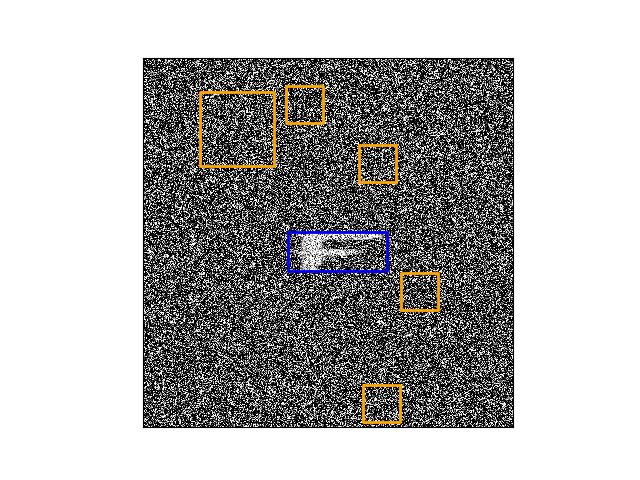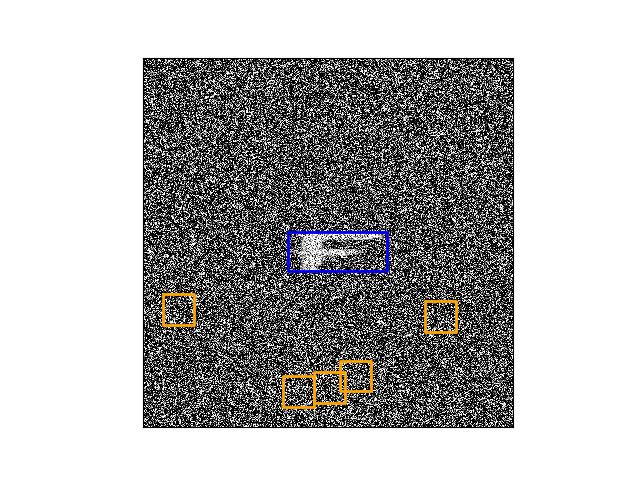ndsampler.isect_indexer module¶
- class ndsampler.isect_indexer.FrameIntersectionIndex[source]¶
Bases:
NiceReprBuild spatial tree for each frame so we can quickly determine if a random negative is too close to a positive. For each frame/image we built a qtree.
Example
>>> from ndsampler.isect_indexer import * >>> import kwcoco >>> import ubelt as ub >>> dset = kwcoco.CocoDataset.demo() >>> dset._ensure_imgsize() >>> dset.remove_annotations([ann for ann in dset.anns.values() >>> if 'bbox' not in ann]) >>> # Build intersection index aroung coco dataset >>> self = FrameIntersectionIndex.from_coco(dset) >>> gid = 1 >>> box = kwimage.Boxes([0, 10, 100, 100], 'xywh') >>> isect_aids, ious = self.ious(gid, box) >>> print(ub.urepr(ious.tolist(), nl=0, precision=4)) [0.0507]
- classmethod from_coco(dset, verbose=0)[source]¶
- Parameters:
dset (kwcoco.CocoDataset) – positive annotation data
- Returns:
FrameIntersectionIndex
- classmethod demo(*args, **kwargs)[source]¶
Create a demo intersection index.
- Parameters:
*args – see kwcoco.CocoDataset.demo
**kwargs – see kwcoco.CocoDataset.demo
- Returns:
FrameIntersectionIndex
- overlapping_aids(gid, box)[source]¶
Find all annotation-ids within an image that have some overlap with a bounding box.
- Parameters:
gid (int) – an image id
box (kwimage.Boxes) – the specified region
- Returns:
list of annotation ids
- Return type:
List[int]
CommandLine
USE_RTREE=0 xdoctest -m ndsampler.isect_indexer FrameIntersectionIndex.overlapping_aids USE_RTREE=1 xdoctest -m ndsampler.isect_indexer FrameIntersectionIndex.overlapping_aids
Example
>>> from ndsampler.isect_indexer import * # NOQA >>> self = FrameIntersectionIndex.demo('shapes128') >>> for gid, qtree in self.qtrees.items(): >>> box = kwimage.Boxes([0, 0, qtree.width, qtree.height], 'xywh') >>> print(self.overlapping_aids(gid, box))
- ious(gid, box)[source]¶
Find overlaping annotations in a specific image and their intersection over union with a a query box.
- Parameters:
gid (int) – an image id
box (kwimage.Boxes) – the specified region
- Returns:
isect_aids: list of annotation ids ious: jaccard score for each returned annotation id
- Return type:
Tuple[List[int], ndarray]
- iooas(gid, box)[source]¶
Intersection over other’s area
- Parameters:
gid (int) – an image id
box (kwimage.Boxes) – the specified region
Like iou, but non-symetric, returned number is a percentage of the other’s (groundtruth) area. This means we dont care how big the (negative) box is.
- random_negatives(num, anchors=None, window_size=None, gids=None, thresh=0.0, exact=True, rng=None, patience=None)[source]¶
Finds random boxes that don’t have a large overlap with positive instances.
- Parameters:
num (int) – number of negative boxes to generate (actual number of boxes returned may be less unless exact=True)
anchors (ndarray) – prior normalized aspect ratios for negative boxes. Mutually exclusive with window_size.
window_size (ndarray) – absolute (W, H) sizes to use for negative boxes. Mutually exclusive with anchors.
gids (List[int]) – image-ids to generate negatives for, if not specified generates for all images.
thresh (float) – overlap area threshold as a percentage of the negative box size. When thresh=0.0, that means negatives cannot overlap any positive, when threh=1.0, there are no constrains on negative placement.
exact (bool) – if True, ensure that we generate exactly num boxes
rng (RandomState) – random number generator
Example
>>> from ndsampler.isect_indexer import * >>> import ndsampler >>> import kwcoco >>> dset = kwcoco.CocoDataset.demo('shapes8') >>> self = FrameIntersectionIndex.from_coco(dset) >>> anchors = np.array([[.35, .15], [.2, .2], [.1, .1]]) >>> #num = 25 >>> num = 5 >>> rng = kwarray.ensure_rng(None) >>> neg_gids, neg_boxes = self.random_negatives( >>> num, anchors, gids=[1], rng=rng, thresh=0.01, exact=1) >>> # xdoc: +REQUIRES(--show) >>> gid = sorted(set(neg_gids))[0] >>> boxes = neg_boxes.compress(neg_gids == gid) >>> import kwplot >>> kwplot.autompl() >>> img = kwimage.imread(dset.imgs[gid]['file_name']) >>> kwplot.imshow(img, doclf=True, fnum=1, colorspace='bgr') >>> support = self._support(gid) >>> kwplot.draw_boxes(support, color='blue') >>> kwplot.draw_boxes(boxes, color='orange')

Example
>>> from ndsampler.isect_indexer import * >>> import kwcoco >>> dset = kwcoco.CocoDataset.demo('shapes8') >>> self = FrameIntersectionIndex.from_coco(dset) >>> #num = 25 >>> num = 5 >>> rng = kwarray.ensure_rng(None) >>> window_size = (50, 50) >>> neg_gids, neg_boxes = self.random_negatives( >>> num, window_size=window_size, gids=[1], rng=rng, >>> thresh=0.01, exact=1) >>> # xdoc: +REQUIRES(--show) >>> import kwplot >>> kwplot.autompl() >>> gid = sorted(set(neg_gids))[0] >>> boxes = neg_boxes.compress(neg_gids == gid) >>> img = kwimage.imread(dset.imgs[gid]['file_name']) >>> kwplot.imshow(img, doclf=True, fnum=1, colorspace='bgr') >>> support = self._support(gid) >>> support.draw(color='blue') >>> boxes.draw(color='orange')
